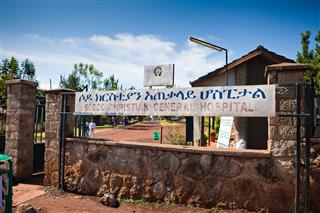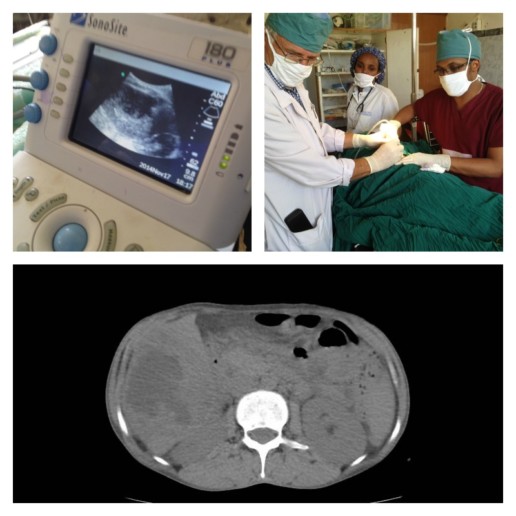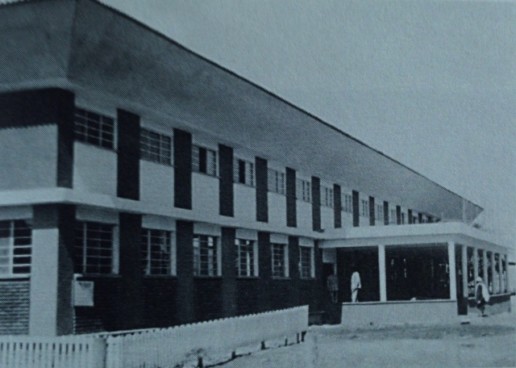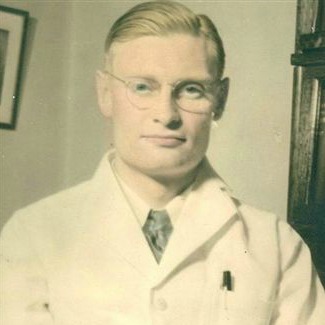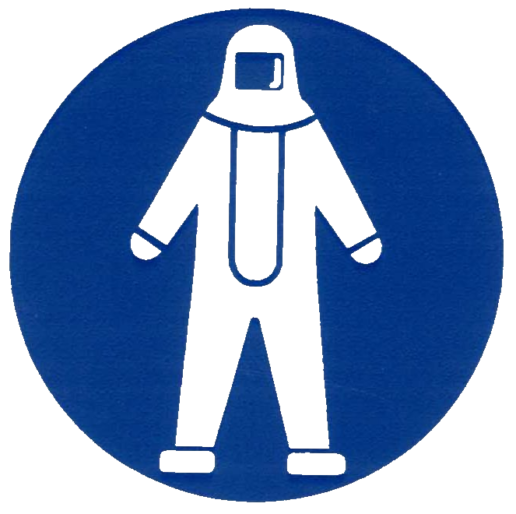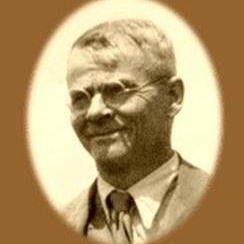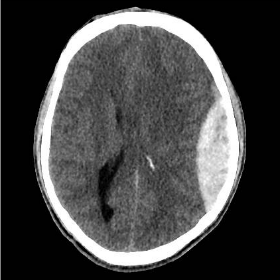SCH History - Part Five
In 1996, the Derg regime had fallen. Dr. Harold Adolph, a former SIM missionary surgeon at the previous mission hospital in Soddo, was asked to come back and operate for a short while to spell the surgeon there. The former mission hospital was now run exclusively by the government. Dr. Adolph and Dr. Andrew Chew travelled to Soddo, and while there, Dr. Adolph sensed the Lord calling him to start a new mission hospital. One that would again bring the Gospel alongside physical healing in Wolaitta.
One of Dr. Adolph’s former students, Dr. Kelemu Desta, was now an established general and plastic surgeon in his own right. Adolph and Kelemu teamed up and began charting the course for a new hospital. As Dr. Adolph prayed and went forth, donors came from everywhere including the USA and Switzerland. The local government had twelve acres of land allocated for the hospital. All that remained was for 18 squatter families to be carefully relocated so construction could begin. That process alone took a year and a half. The process of getting approval for all the plans took another two years. A water well was drilled to a depth of 127 meters. Things were in motion.
Finally, building began in June of 2002. Cement shortages were common, and the building seemed to go painfully slow. Through it all, Dr. Adolph claimed the promises of God in 1 Chronicles 28:20:
Be strong and courageous and get to work. Don’t be frightened by the size of the task, for the Lord my God is with you. He will not forsake you. He will see to it that everything is finished correctly.
Many people who had been helped at the previous mission hospital, now in middle age, came forward to help. Even the president of the zone, realizing that Dr. Adolph had delivered him at his birth, did what he could to help the process. The building contractor, Yakob Gebeyehu, and the Assistant Administrator, Gebeyehu Utalo, had also both been patients of Dr. Adolph’s.
On January 26, 2005, the Soddo Christian Hospital opened its doors to begin treating patients.
[ois skin="Blog Post Share"]
Our New Year's Resolution
 Another Christmas season has come and gone. We have celebrated the coming of the One and Only Savior who redeems the world from sin and death. At Soddo Christian Hospital, the message of Christmas is the very core of what we do and why we do it.
Another Christmas season has come and gone. We have celebrated the coming of the One and Only Savior who redeems the world from sin and death. At Soddo Christian Hospital, the message of Christmas is the very core of what we do and why we do it.
Now, as we look to 2015, many of us will make "New Year's Resolutions". The dictionary defines a "resolution" as a "firm decision to do something." Why write a resolution? What should you resolve to do? Jonathan Edwards, one of the greatest theologians to ever live, wrote many helpful resolutions hundreds of years ago. Here was one of them:
Resolved, that I will do whatsoever I think to be most to God’s glory, and my own good, profit and pleasure, in the whole of my duration, without any consideration of the time, whether now, or never so many myriad’s of ages hence. Resolved to do whatever I think to be my duty and most for the good and advantage of mankind in general. Resolved to do this, whatever difficulties I meet with, how many and how great soever.
At SCH, we want to make a New Year's Resolution as well. We resolve to pursue God's glory at our hospital to the best of our ability this year. We resolve to provide excellent medical care with the resources given to us. We resolve to preach the Gospel - the life-giving message that Jesus died and rose again to deliver us from sin and death. We resolve to make disciples of Him through all means possible.
And we pray that God will empower us to fulfill these resolutions, just as Paul prayed for the Thessalonians:
To this end we always pray for you, that our God may make you worthy of his calling and may fulfill every resolve for good and every work of faith by his power, so that the name of our Lord Jesus may be glorified in you, and you in him, according to the grace of our God and the Lord Jesus Christ. (2 Thessalonians 1:11-12 ESV)
Happy New Year from SCH!
[ois skin="Blog Post Share"]
Teamwork at SCH

As our capabilities at Soddo Christian Hospital expand, we are working together as a team to make diagnoses, and provide cutting edge treatment for patients. The other day, we had a woman present to the Emergency Room with upper abdominal pain and fever. The ER docs did a great job with the bedside ultrasound finding what appeared to be either a fluid collection or a mass in her liver (top left picture). Then, a CT scan by the Radiology Department confirmed that it was indeed an abscess in the liver (lower pane). Finally, our expert radiologist teamed up with our surgeons (that's our chief resident Dr. Segni in the top right picture) to do an ultrasound-guided percutaneous drain. This is a minimally invasive way to get the infection out instead of a big operation.
We are so proud of all of our services working together to get the best outcomes for patients! Praise God for new technologies and teamwork!
[ois skin="Blog Post Share"]
Medicine + the Gospel - History of SCH Pt. 4
In 1946, the missionaries returned to Soddo, having found a vibrant church had grown in their absence. In addition to this, they reoccupied the hospital they had started before - having to kick out some livestock who had taken up there!
In the following decades, the ministry of the hospital grew. What had begun as primarily a church planting ministry, now evolved into a medical ministry - ministering to the sick and dying in an effort to preach to them the Gospel of Jesus. Dr. Barlow and other physicians cared for burn and trauma patients, obstetric emergencies, malaria, typhoid, leishmaniasis, schistosomiasis, and a whole host of other conditions. The hospital grew to 105 beds to care for the sick of Wolaitta and the surrounding areas. The Gospel was shared, and many came to know Christ.
The conditions were meager, such that in 1967 when Dr. Harold Adolph joined the staff, he described a hospital with walls made from mud and sticks covered with "bamboo mats to keep them from oozing when it rained." The operating room light was a single light bulb dangling from a rusty coat hanger. The OR table only had three legs, with a some scrap pieces of lumber cobbled together for the fourth. In fact, the one sterilizer they had exploded, forcing the surgeons to use the largest pressure cooker they could find to sterilize instruments.

The need for a new hospital was great. And SIM and the doctors began raising funds for that purpose in the late 1960s. By 1975, the new hospital was complete having been built in a period of seven years by five different contractors. Dr. Adolph and the others, however, would barely have any time to enjoy their new facility. In 1974, a coup d'etat forced Emperor Haile Selasse from the throne and brought to power a harsh military and then Communist regime known as "the Derg". Aligning itself with the Soviet bloc, the Derg became hostile to any Western influences, and forced the missionaries to leave the country in 1976. They then took over the new hospital which SIM had built and made it a government hospital. Only God knew then if a medical ministry would return to Soddo someday. St.ay tuned...
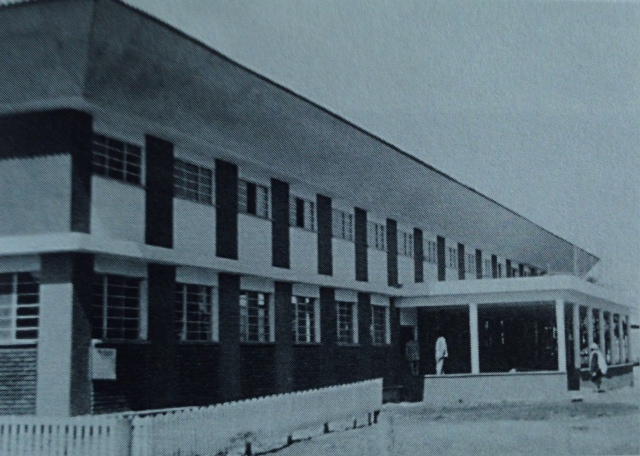
This is the fourth installment in a series of posts about the history of SCH.
SCH Promoting Women's Health
At SCH, we care about the whole person. Of course, we provide great medical care when patients come to the hospital. But we are also looking for ways to improve health in the community. In this case, women's health!
Allison Karnes is the wife of our Ob-Gyn, and Ingeborg Roth is the wife of our Radiologist. The two of them have teamed up to start a new ministry called "WRAPs". What are "WRAPs" you ask? Well, I'll let Allison tell you:
"Hi Friends! Inge and I want to welcome you and introduce you to a very special ministry that we have been working on while in Soddo, Ethiopia. WRAPs: Washable, Reusable, Affordable, Pads. We are empowering school girls to embrace their God-given femininity and learn proper hygiene by providing them with reusable sanitary pads. Most village girls in Ethiopia do not have funds or even access to purchase disposable pads, so therefore, often miss one week of school a month during their menstrual cycle. We are committed to using Ethiopian products as much as possible. Also, we are providing jobs for Ethiopian women as they learn to make our WRAPs. God has given us a dream and it's a honor and joy to see girls tell us that "this product has changed my life!"

Watch this quick video to learn more about us and how you can help!
[ois skin="Blog Post Share"]
A Church Born in a War - History Part 3
When we last left our story, the missionaries in Soddo were seeing new converts under the looming threat of war. What had once been a stronghold of Satan worship and paganism, was beginning to see its first evangelical church!
In February of 1935, the missionaries began building the first mission hospital in Soddo. Only eight months later, the Italian General de Bono marched into Ethiopia with troops without even a declaration of war. The occupation was underway, but in remote Wolaitta Soddo, the missionary work continued on. News came to the missionaries in Soddo as various events unfolded. They worked ever harder to win more and more converts to Christ, knowing that their time in the country may be limited.
On May 5, 1937, Addis Ababa fell to the Italian invaders. It was not known how long, or even if, the invaders would make their way to the southern regions. But they did, and on January 19, 1937, Soddo itself was occupied with Italian troops. Just three months later, the missionaries were forced to leave. Nineteen adults and seven children boarded an Italian army convoy which took them to Addis to depart the country.
In those two years between the first rumblings of war and the evacuation, God added several dozen new converts to the young Soddo church. It was not known what would happen in the years that followed. What ensued was a vigorous persecution of the new Christians. Wandaro himself was jailed and beaten almost to the point of death. As other leaders were imprisoned, and yet stayed strong in their faith, it only gave credibility to the young church. The gospel spread like a wildfire, and converts were added by the hundreds, and then thousands.
In 1945, as World War II ended and the Italians had been defeated, missionaries started to return to Ethiopia. Upon arriving to Soddo, they were greeted and welcomed back by the thousands of Christian believers in Wolaitta. Over 150 churches had sprung up in their absence. They rejoiced to see what God had done in the midst of the suffering that had taken place. A huge vibrant church had been born!
The new converts had done the best they could with no missionaries around. Some rather humorous practices had developed. Some of them recalled seeing only believers at Communion. So the first Wolaittan church adopted the custom of dismissing all non-Christians when the Lord's Supper was served. And they swore the participants to secrecy - not to describe the Lord's supper to anyone. They had also stopped raising goats - due to Jesus's warning that the "goats" would be sent to eternal damnation in Matthew 25!
They had to wait until the fall of 1946 before they were permitted to move back onto the old mission station. At that point, all of the hospital and the residences had been occupied by squatters and their animals. The Ohmans, now with Dr. and Mrs. Nathan Barlow, began taking possession of the hospital back, and gradually restored the place to a usable condition. Even though it would be a while before they could start doing surgery again, the word of their return traveled fast, and already patients were lining up to be seen.
[ois skin="Blog Post Share"]
Ebola Training
The current Ebola epidemic is devastating. Already, it has taken more lives than all other Ebola epidemics before it. We pray that this deadly diseases does not come to Ethiopia. But if it does, we want to be prepared. And to keep our staff as safe as possible.
We have purchased Tyvek suits, goggles, boots, masks. Everything that we need to keep our providers safe. And this past month, we did some training with our nurses, on how to protect themselves if a suspected case came our way.

History of the Mission to Soddo, Pt. 2
How is a church born? In Soddo, it happened like this:
In 1928, the Lambies had arrived in Soddo to set up the mission station. Along with them were the Rhoad family, and three single men: Glen Cain, Walter Ohman, and Clarence Duff. They were invited to set up their homes in a place called Otona which sat atop a foothill just to the east of Mt. Damota. (Soddo sits in the shadow of Mt. Damota which was named for a previous king in this area).
They set to work building their homes which were made of local materials. According to SIM's policy, they were to have the luxury of a bathtub and a cook stove in the home, "so as to add to the missionaries' comfort." They spent their days in the homes of the Wolaitta people, learning their language with one goal in mind: to be able to formulate a Gospel presentation to the people. They established a clinic to provide practical help to the people in that area as well.
In 1929, their forces expanded. The mission team was joined by the Lewis family, Selma Bergstren, and a nurse named Ruth Bray. Within two years, the team had learned the local language enough to present the Gospel. They began preaching at Otona to those who were coming to the clinic - combining physical and spiritual ministry just as we do today at Soddo Christian Hospital. One day, a young man named Wandaro happened to come by and hear the preaching.
Wandaro was from Humbo, a little south of Soddo, and his father was a well-known witch doctor there. On that day, Wandaro had been on his way to the market at Soddo, when a terrible thunderstorm hit, and he ducked into the clinic in Otona to get out of the rain. It was there that he first heard the Gospel, which he said sounded like "honey to his stomach." He was drawn to the message, and a week later went back to hear more. After a third visit, he professed faith in Jesus Christ, and the first Wolaitta believer was born.
In the years that followed, many more professed faith in Jesus, and the missionaries were baptizing new converts regularly. The Lewises lost a baby son three days after birth, and many Wolaittans came to mourn with them. In the wake of this tragedy, many locals became Christians after observing the peace that the mission team exhibited in the face of such tragedy.
By 1936, there were 73 believers in Soddo. The mission had expanded to neighboring villages as well like Koisha, Yirga Alem, and Arba Minch. It was estimated that in all of this southern region, they had seen close to 150 conversions. But the tide of war was sweeping into Ethiopia. The Italians had invaded, and the missionaries were going to be forced to leave. Many of them left with a sadness. Despite what they had seen, they feared it wasn't enough to birth a new church yet.
But God had plans for the Soddo church...
[ois skin="Blog Post Share"]
History of the Mission to Soddo, Pt. 1

At SCH, we are standing on the shoulders of Christian pioneer missionaries and missionary doctors who went before us. As we approach our ten-year anniversary in a few months, we thought we’d take a look at where we began, and how far God has brought us.
Dr. Thomas Lambie was a medical missionary with the American Presbyterian Mission working among the Sudanese Nuer people. In 1918, he became the first American missionary in Ethiopia when he sailed up the Baro River and began working among the people of the Wellega region. He labored there for the next 10 years, founding a hospital, a school, and a vibrant church. At this point, he combined forces with two other missionaries – Albert Rhoad and George Buxton - and founded Abyssinian Frontiers Mission.
Now at that time, Christianity had not made its way into the southern part of Ethiopia. At least fifty different people groups occupied the south, and most were engaged in animistic worship and witchcraft. Some accounts say they were devoted to the occult and the “worship of Satan”. Dr. Lambie and his colleagues were deeply burdened by this and desired to penetrate this area with the Gospel. Abyssinian Frontiers Mission merged with the Sudan Interior Mission (SIM), and was given permission to set up a mission station in the South. The most logical place at that time was Soddo.
The governor of Soddo was a man named Dejazmatch Yigezu who providentially had been a patient of Dr. Lambie’s in Wellega. He remembered the doctor, and welcomed the missionaries. (In addition, the missionaries had the support of Emperor Haile Selassie since the magistrates of Wellega had spoken highly of them). The mission station in Soddo was established by 1929, and evangelistic efforts were spreading out from there to Sidamo (Yirga Alem), and Gamo Gofa (Arba Minch).
It should be noted that Soddo was chosen as the main hub because of its easy access to Addis Ababa. At that time, it took two weeks with a mule caravan to reach Soddo from Addis. But this was considered a good distance for fetching supplies, and yet still to be a good launching point to reach the South!
In the next post, we'll tell you how the Church in Soddo began under the mission work of the Lambies and others...
[ois skin="Blog Post Share"]
Neurosurgery at SCH?!?
What do you think happens when you combine the following:
- A country with the highest number of pedestrians struck by vehicles relative to cars on the road
- A brand new CT scanner among a population of 5 million people who previously had none
If you answered, “a lot of new diagnoses of head trauma”, you’d be right. Our CT scanner is practically smoking with all the head CTs for trauma that are being done. Most of the time, we find non-operative bleeds. But the last two weeks has been extraordinary. In September alone, we have taken seven patients to the OR with epidural and subdural hematomas that required emergency surgery.
 Above are just four of the actual scans done here in the past two weeks. And there are more! We’ve had great outcomes so far, and our surgery residents and staff are doing more emergent neurosurgery than they ever could have imagined.
Above are just four of the actual scans done here in the past two weeks. And there are more! We’ve had great outcomes so far, and our surgery residents and staff are doing more emergent neurosurgery than they ever could have imagined.
We praise God that He provided through our donors. Through your generosity, we got a CT scanner. And it is being used for His glory as lives are being saved. May the name of Christ go forth in southern Ethiopia as we use this gift. That is our prayer.

